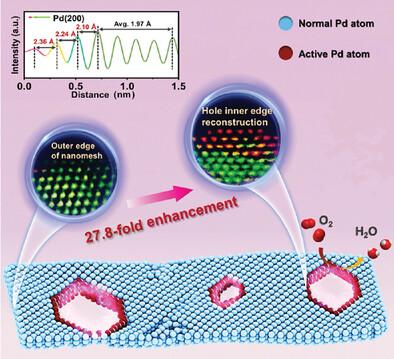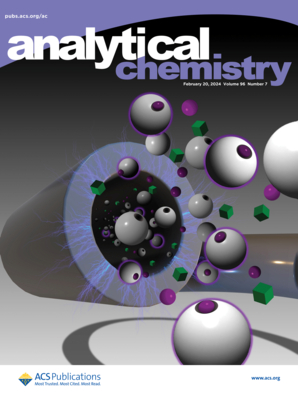Greatly Enhanced Oxygen Reduction Reaction in Anion Exchange Membrane Fuel Cell and Zn-Air Battery via Hole Inner Edge Reconstruction of 2D Pd Nanomesh
IF 6.7
1区 化学
Q1 CHEMISTRY, ANALYTICAL
引用次数: 0
Abstract
Platinum group metals (PGM) have yet to be the most active catalysts in various sustainable energy reactions. Their high cost, however, has made maximizing the activity and minimizing the dosage become an urgent priority for the practical applications of emerging technologies. Herein, a novel 2D Pd nanomesh structure possessing hole inner reconstructed edges (HIER) with exposed high energy facets and overstretched lattice parameters is fabricated through a facile room-temperature reduction method at gram-scale yields. The HIER enhances the catalytic performance of Pd in electrochemical oxygen reduction reaction (ORR), achieving superior mass activity (MA) of 2.672 A mgPd−1, which is 27.8 fold and 23.6 fold higher, respectively, than those of the commercial Pt/C (0.096 A mgPt−1) and Pd/C (0.113 A mgPd−1) at 0.9 VRHE. Most significantly, in H2-air anion exchange membrane fuel cell (AEMFC) and Zn-air battery (ZAB) applications, this unique Pd catalyst delivers a much-outperformed peak power density of 0.86 and 0.22 W cm−2, respectively, compared with 0.54 and 0.13 W cm−2 of the commercial Pt/C catalyst, indicating a novel pathway in electrocatalyst designs through HIER engineering.

通过二维钯纳米网格孔内缘重构大幅增强阴离子交换膜燃料电池和锌-空气电池中的氧还原反应
在各种可持续能源反应中,铂族金属(PGM)一直是最活跃的催化剂。然而,铂族金属的高成本使得最大限度地提高活性和减少用量成为新兴技术实际应用的当务之急。在此,我们通过一种简单的室温还原方法,以克级产量制造出了一种新型二维钯纳米网状结构,这种结构具有孔内重构边(HIER),具有暴露的高能面和过度拉伸的晶格参数。HIER 增强了钯在电化学氧还原反应(ORR)中的催化性能,在 0.9 VRHE 条件下,钯的质量活度(MA)达到 2.672 A mgPd-1,分别比商业铂/钯(0.096 A mgPt-1)和钯/钯(0.113 A mgPd-1)高出 27.8 倍和 23.6 倍。最重要的是,在 H2- 空气阴离子交换膜燃料电池 (AEMFC) 和锌空气电池 (ZAB) 应用中,这种独特的钯催化剂的峰值功率密度分别为 0.86 W cm-2 和 0.22 W cm-2,远高于商用铂/钯催化剂的 0.54 W cm-2 和 0.13 W cm-2,这表明通过 HIER 工程在电催化剂设计方面开辟了一条新途径。
本文章由计算机程序翻译,如有差异,请以英文原文为准。
求助全文
约1分钟内获得全文
求助全文
来源期刊

Analytical Chemistry
化学-分析化学
CiteScore
12.10
自引率
12.20%
发文量
1949
审稿时长
1.4 months
期刊介绍:
Analytical Chemistry, a peer-reviewed research journal, focuses on disseminating new and original knowledge across all branches of analytical chemistry. Fundamental articles may explore general principles of chemical measurement science and need not directly address existing or potential analytical methodology. They can be entirely theoretical or report experimental results. Contributions may cover various phases of analytical operations, including sampling, bioanalysis, electrochemistry, mass spectrometry, microscale and nanoscale systems, environmental analysis, separations, spectroscopy, chemical reactions and selectivity, instrumentation, imaging, surface analysis, and data processing. Papers discussing known analytical methods should present a significant, original application of the method, a notable improvement, or results on an important analyte.
 求助内容:
求助内容: 应助结果提醒方式:
应助结果提醒方式:


